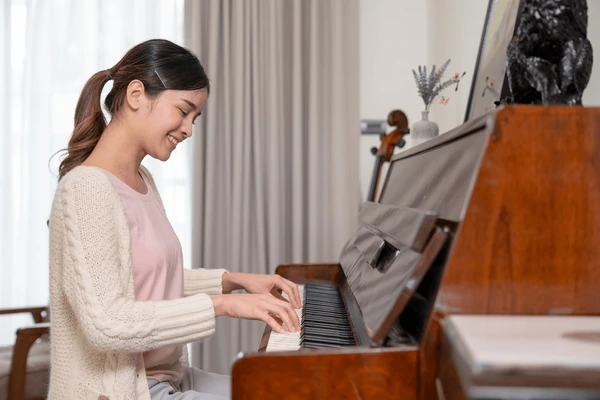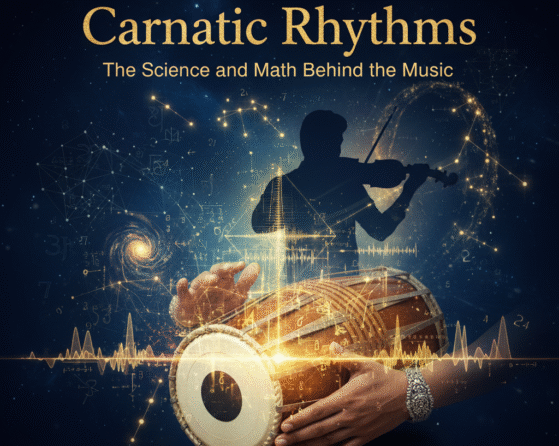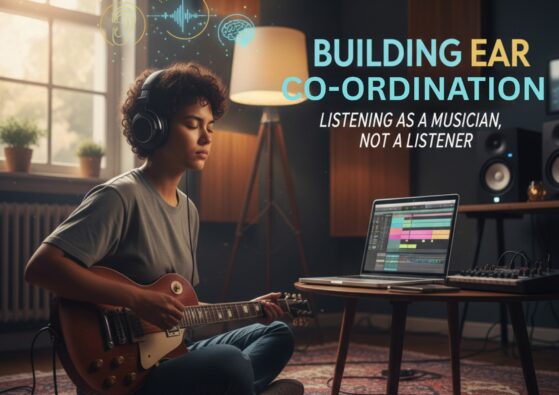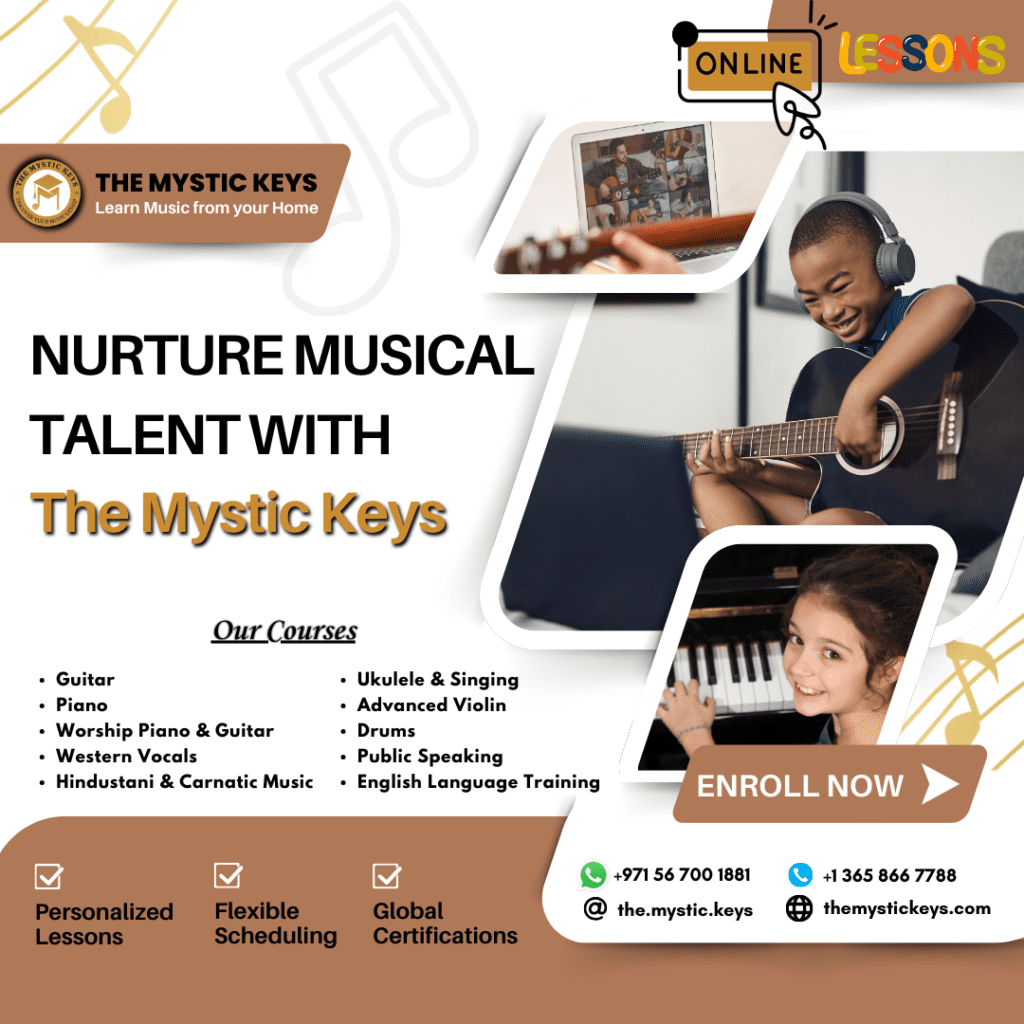Advanced Piano Techniques | Mastering Dynamics and Expression
Music is often described as the language of the soul, an art form capable of conveying emotions that words alone cannot express. While technical proficiency is essential, it is the emotional depth and expressive dynamics that truly bring a performance to life. Whether you are a pianist, guitarist, vocalist, or any other type of musician, understanding how to add dynamics and expression to your performance can transform your music from merely technically correct to profoundly moving. Here’s a comprehensive guide on how to infuse your playing with emotion.

Understanding Dynamics
Dynamics in music refer to the variations in loudness and softness within a piece. These fluctuations are essential for conveying emotion and creating a sense of drama. The primary dynamic markings you will encounter include:
- Pianissimo (pp): Very soft
- Piano (p): Soft
- Mezzo-piano (mp): Moderately soft
- Mezzo-forte (mf): Moderately loud
- Forte (f): Loud
- Fortissimo (ff): Very loud
Practical Tips for Implementing Dynamics
Gradual Changes:
- Crescendo: Gradually getting louder.
- Decrescendo/Diminuendo: Gradually getting softer.
Practice these gradual changes within scales and simple pieces to develop control over your dynamic range.
Sudden Changes:
- Sforzando (sfz): A sudden, strong accent.
- Fortepiano (fp): A loud note followed immediately by a soft note.
Incorporate these sudden changes to highlight specific phrases or notes, adding surprise and intensity to your performance.

Expression Techniques
1. Rubato:
Rubato, meaning “stolen time,” involves varying the tempo within a phrase, stretching some notes and compressing others. This technique allows for greater expressiveness and can be used to emphasize emotional peaks within the music. Experiment with subtle rubato, ensuring it feels natural and enhances the musical narrative.
2. Articulation:
Articulation refers to how notes are played, including their attack, duration, and decay. Common articulations include:
- Legato: Smooth and connected.
- Staccato: Short and detached.
- Accents: Emphasizing specific notes.
Combine different articulations to shape phrases and convey varying emotions. For example, a legato passage can evoke a sense of calm, while staccato notes can add excitement or tension.

3. Phrasing:
Think of musical phrases as sentences within a paragraph. Just as a good orator uses pauses and emphasis to convey meaning, a musician uses phrasing to shape musical ideas. Practice playing phrases with a clear beginning, middle, and end, considering the natural rise and fall of the music.
4. Vibrato:
For string players, vocalists, and wind instrumentalists, vibrato adds warmth and intensity to a note. Experiment with different speeds and widths of vibrato to find what best suits the piece and your personal style.
Emotional Connection
To truly play with emotion, you must connect with the music on a personal level. Here are some strategies to deepen your emotional engagement:
Understand the Story:
- Research the background of the piece and the composer’s intent. Understanding the story behind the music can provide insight into the emotions you need to convey.
Visualize:
- Create mental images that correspond to the emotions in the music. Visualizing a serene landscape or a turbulent storm can help you internalize and express the music’s character.
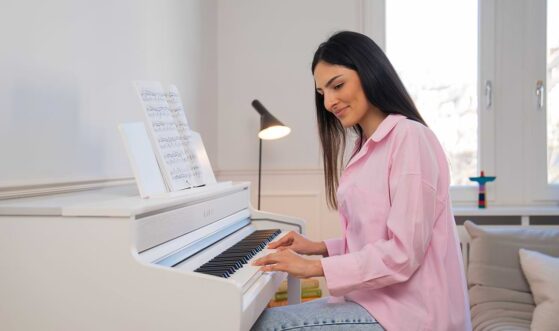
- Create mental images that correspond to the emotions in the music. Visualizing a serene landscape or a turbulent storm can help you internalize and express the music’s character.
Personal Experience:
- Draw from your own emotions and experiences. Channeling your feelings into your playing makes the performance more authentic and relatable.
Practice Techniques
Slow Practice:
- Practice slowly to ensure you are hitting the correct notes and rhythms while focusing on dynamics and expression. Gradually increase the tempo while maintaining emotional depth.
Record Yourself:
- Recording your practice sessions allows you to objectively evaluate your dynamics and expressiveness. Listen critically and identify areas for improvement.
Play for Others:
- Performing for friends, family, or teachers can provide valuable feedback and help you become more comfortable expressing emotions in front of an audience.

Conclusion
Adding dynamics and expression to your performance is a transformative journey that demands patience, practice, and a profound connection to the music. At The Mystic Keys, we emphasize mastering these techniques to not only enhance technical prowess but also to enrich communication and deeply move your audience. Remember, music surpasses mere notes—it embodies an emotional journey that speaks directly to the heart. Embrace the power of dynamics and expression, and let your music resonate with heartfelt emotion.
For more information and exciting resources on learning music, visit
The Mystic Keys. Follow us on Facebook, Instagram, YouTube, LinkedIn, Twitter,
Pinterest, Reddit, Threads and
Quora for engaging music content and special updates.Let’s explore the journey to musical excellence together!


